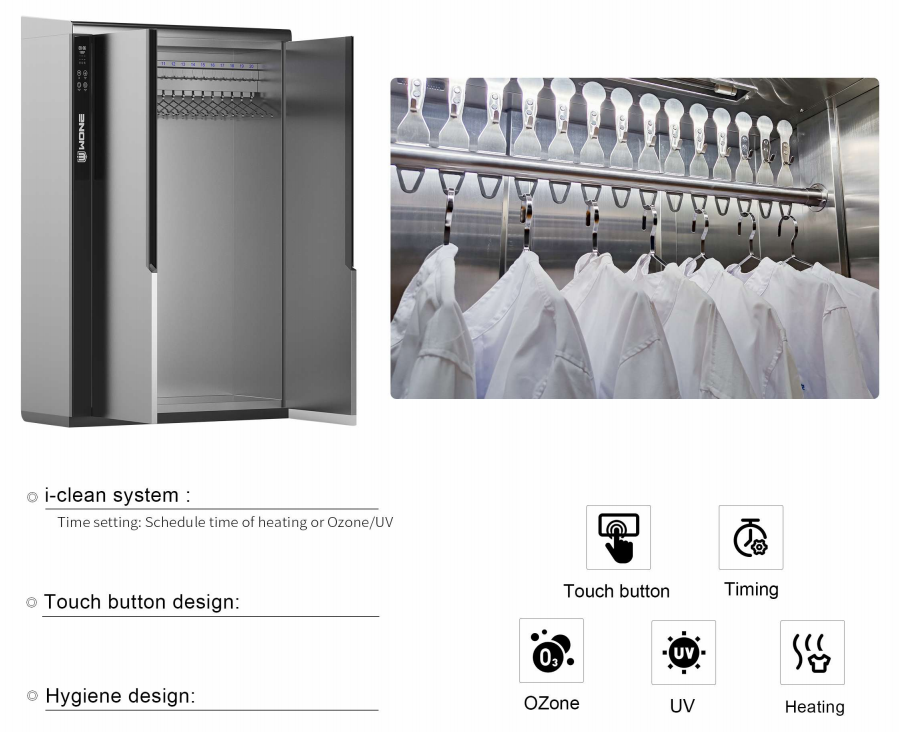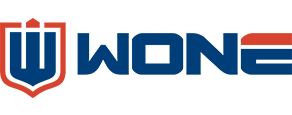Work Clothes Management in a Food Factory
In the food manufacturing industry, hygiene extends far beyond hand washing and surface sanitation. One of the most potent, yet often overloo-
ked, vectors for contamination is the clothing worn by employees. Work clothes management is not an operational afterthought; it is a critical
control point in any robust Food Safety Management System (FSMS). Properly sanitized and stored uniforms are essential for preventing
cross-contamination, protecting products, and ensuring compliance with stringent global standards like GMP, HACCP, and BRCGS.
Why Work Clothes Management is Non-Negotiable
Daily, employees' workwear comes into contact with various surfaces, equipment, and the food itself. Without a controlled management system,
fabrics can harbor and transfer:
- Pathogens: Bacteria like Listeria, E. coli, and Salmonella can survive on fabrics.
- Allergens: Proteins from nuts, dairy, gluten, or other allergens can cling to clothing.
- Physical Contaminants: Lint, hairs, and dust particles can dislodge from soiled uniforms.
A dedicated disinfection and storage system is the only way to systematically mitigate this risk, ensuring that every employee starts their shift in
clothing that is as clean and safe as the production environment itself.
Best Practices for Work Clothes Management
An effective program involves more than just providing uniforms. It requires a structured process:
- Dedicated Use: Work clothes must never leave the facility. They should be donned upon entry and removed before leaving, preventing the introduction of external contaminants from the street, home, or commute.
- Regular Replacement: Soiled clothing must be exchanged for clean, sanitized garments at a frequency that reflects the risk level of the production area (e.g., daily or even per shift in high-risk zones).
- Professional Laundering vs. On-Site Management: While many facilities outsource laundering, this introduces logistical complexity and risk during transport. A growing trend is the use of on-site disinfection wardrobes, which offer immediate control, guaranteed sanitation, and 24/7 availability.
The Modern Solution: The Integrated Disinfection Wardrobe
For factories seeking the highest level of control, a dedicated disinfection wardrobe is a transformative investment. This is not a simple locker but
an automated sanitization cabinet designed to address the unique needs of the food industry.
A modern disinfection wardrobe, like the one we provide, combines multiple technologies to ensure total hygiene:
- Ozone (O₃) Function: Ozone is a powerful oxidizing agent that effectively destroys a wide spectrum of bacteria, viruses, and molds at the molecular level. It penetrates fabric fibers, reaching areas that surface-level cleaning might miss.
- Ultraviolet (UV) Function: UV-C light provides a potent secondary sanitizing effect, damaging the DNA of microorganisms and preventing them from replicating. It acts as a continuous barrier against microbial growth inside the cabinet.
- Heating & Drying Function: Dampness is the enemy of hygiene. A built-in heating system rapidly and thoroughly dries work clothes after use. This is crucial because moisture creates an ideal environment for the proliferation of pathogens.
- Timing & Touch Button Control: User-friendly controls, including a touch interface and programmable timer, allow for easy operation and ensure that each disinfection cycle runs for the precise duration required for maximum efficacy. This automation removes human error from the process.

The Tangible Benefits of an Automated System
Integrating a smart disinfection wardrobe into your facility delivers immediate and long-term returns:
Enhanced Food Safety: Dramatically reduces the risk of product contamination from clothing-borne hazards.
Unified Compliance: Provides auditable, verifiable proof of your commitment to personnel hygiene, simplifying certifications and inspections.
Operational Efficiency: Eliminates the costs, logistics, and potential delays associated with outsourced laundry services.
Employee Morale: Provides staff with clean, dry, and fresh-smelling uniforms daily, boosting comfort and professionalism.
Implementing a Robust Program: A Step-by-Step Approach
Risk Assessment: Identify the specific contamination risks present in your different processing zones.
Policy Development: Create clear, written Standard Operating Procedures (SOPs) for the use, storage, and disinfection of work clothes.
Infrastructure Investment: Install disinfection wardrobes in designated changing areas to serve as the central hub for garment care.
Employee Training: Educate all personnel on the "why" and "how" of the work clothes policy, emphasizing their vital role in food safety.
Monitoring and Verification: Regularly audit the process and, if possible, use data from smart wardrobes to verify cycle completion and
effectiveness.
Conclusion: An Investment in Your Product and Your Brand
In today's competitive market, a comprehensive work clothes management program is no longer optional. It is a fundamental pillar of a modern
food safety culture. By moving beyond traditional lockers and laundries to an integrated, on-site disinfection wardrobe system, food factories can
erect a powerful barrier against contamination.
This proactive approach safeguards public health, protects your brand from the devastating cost of a recall, and demonstrates a gold-standard
commitment to quality that resonates with auditors and customers alike.


